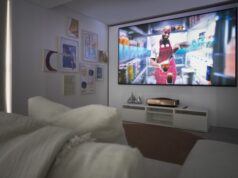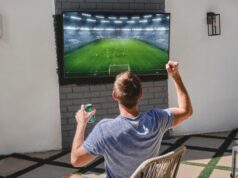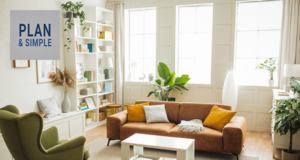
A quality screen is vital to the successful installation of a projected home theatre. Learn about the pros and cons of woven and perforated screens.

When selecting a projection screen, there are some primary factors to consider before you buy. These include acoustic penetration, colour reproduction, contrast, weave and black backing.
Ultimately, it’s the weave that will determine the quality of sound penetration with a minimal amount of damping. The weave also determines whether or not there will be a moiré issue with your projector.
Moiré effect is probably the greatest obstacle in designing a good acoustic projection screen. Ever wonder why people spend so much money on projection screens instead of just hanging up a bed sheet? Well, the regular weave of a bed sheet presents a patterned series of small holes that overlap with the field of pixels from a digital projector. By themselves, neither pattern is recognisable at a distance but, together, they create vertical, horizontal and diagonal lines (artefacts) that really diminish the picture quality.
Extreme cases look like the picture is being viewed through the mesh on a screen door.
Regular projection screens are designed to not show visual artefacts like moiré, but it can still plague acoustic screens. A loose weave, off-angled weave or the sieve-like pattern of a perforated screen can easily overlap with the digital projection of 1080p or LCOS resolution causing this problem. It’s unlikely that you’ll encounter an acoustic screen that cannot at least handle the resolution of a 720p projector, but the greater the projection resolution the higher the probability of moiré. The inevitable solution will be a resolution that is so fine that it will be virtually identical to the flawless lines of a cellulose image.
Perforation needle vs loom
Perforated screens use a strong PVC material that has been perforated with thousands of holes, typically less than 0.3mm in diameter. This allows sound to penetrate the material while stopping light from passing through to illuminate the wall behind it and create a double projected image that will ruin the presentation.
Weave, however, is made on a loom similar to the way a bed sheet is woven, except the weave pattern must be at a certain diagonal angle. Most acoustically transparent materials are not THX certified. Some people consider woven materials to be superior to the perforated materials in regards to damping. Weave materials (when done right) tend to be less prone to suffering from moiré than the garden-variety perforated screen does.
Although there are finely made perforated acoustic projection screens that do carry a THX certification, they tend to be prohibitively expensive, as in “if you have $10,000-$15,000 laying around to buy a projection screen then it’s not too expensive” kind of way. As for the other 98% of us, the weave should do its job perfectly, allowing for sound to breathe through it with less damping than punched material does.
That being said, there are three primary issues with woven screens that can be argued – light penetration, moiré, and poor colour temperatures. Since the white part of a woven screen is actually clusters of white thread, there is an opportunity for a shift in colour temperature leaving the screen a touch too far on the yellow, green, blue or red end of the visible light spectrum. As for light penetration, it creates two possible issues: double-imaging and low gain reflectivity.
A double image is a phenomenon caused when the projected light imparts its image on a fabric (un-backed) screen and then makes a second image on the wall behind it that is bright enough to be seen by the viewer. Because of the offset difference between the projection surface and the wall behind it, a highly distracting double image is made that ruins the video side of the presentation. The solution is to include a black-backing comprised of acoustically transparent black fabric. Although it does little against light loss, it does prevent double-imaging.
Finally, moiré is caused when the weave is too loose or if it is woven at an incorrect angle. Either way causes a pattern conflict with a digital projector creating vertical, horizontal or diagonal line patterns. Most woven screens are made to accommodate 720p to 1080p resolutions but it’s worth exercising caution in buying one for the new LCOS projectors. Take the time to discuss performance with screen manufacturer first.
Although many people lean favourably toward woven acoustic material, perforated material is not necessarily the terrible choice that it’s sometimes made out to be. It does have its benefits. There are a few THX certified brands that will perform well in most media room environments. Also, the average perforated acoustic material usually works fairly well with a 720p projector. It even has an advantage over woven screens in regards to not suffering from double-imaging.
The drawback is that only the most expensive perforated materials perform their roles in a universally acceptable manner. Entry-level perforated screens tend to easily fall victim to moiré effect. Also, the typical perforated material just does not deliver the acoustic penetration that many people want to hear. The small perforations that comprise up to 10% of the screen surface are what is relied upon to get as much sound through as possible, without damping too much, but it’s hard not to imagine how much bounces back, even before acoustic testing is done.
In the end, expect to pay a higher price for acoustically transparent material because more goes into its design and production. Try to get a screen that is proportionately priced to the projector being used which is about ⅓ to ½ the projector cost.





